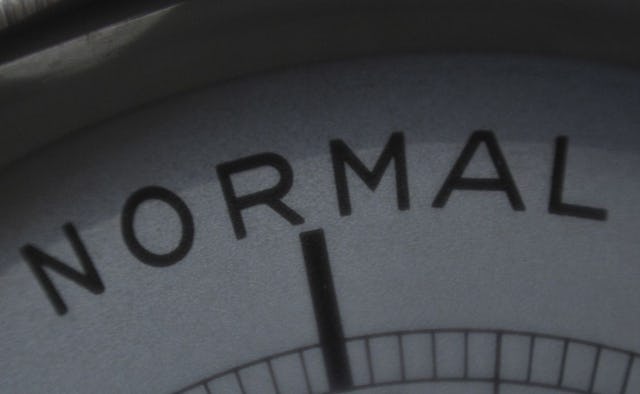Are you Normal?

From the moment you’re born, you’re weighed and measured, compared against an invisible normal. You’re plotted on a chart of percentile curves; examined and assessed and categorized. Your results arrive as numerical values that become “yours,” and where your plot points fall on your chart becomes “you.” But it’s in the chasm between “you” and that invisible normal where most of us spend our lives, wasting the best of our years on a channel crossing away from who we are, toward who we believe we’re supposed to be.
Whether or not you want to be normal is beside the point. Other people want you to be normal. Your parents, for instance; the doctors, your delivery nurse, maybe not your siblings, but you get the idea. You either match or you don’t, and if you don’t, then things will move in the direction of getting fixed (whether or not whatever “it” is, is broken). Rest assured, soon enough you will feel broken.
“You’re here,” your doctor might say, pointing to a solitary mark. “But you should be here.” His finger skids up toward a densely populated cluster.
Unconsciously, we consider all results to be our worth, and we shrink or expand our self-image to fit inside these notions. But we are not our results, just as we are not who other people imagine us to be, and yet we are placed and displaced according to these returns. We spend our lives living up or down to a system of externally valued standards and norms, unwittingly applying this system of measurement to ourselves, raising our children according to it, and teaching them to pass it down. This invisible normal against which we are all measured is a fiction, but we believe it’s true because of the great truth that binds us all: fear there’s a right way to be human and the secret conviction we’re not being it.
We are solitary creatures whose lives are as unknowable to others as they often are to ourselves, but somehow we have convinced ourselves that other people are being human better than we are, and we look to them as our barometers for how to be, or not to be, because we have no idea if who we are being is right enough. Because we’ve only ever been ourselves, we have no other reference point for how to be a person, and we come to believe—most of us—that we’re not doing it right, or that others are doing it better. We are forced to use other people’s experiences as our reference points for what is right and good, for how to be. This leaves us to silently compare, to look outside ourselves and base our ideas about normality against our subjective view of what, to us, is abnormal.
We are locked inside the beliefs we have about ourselves and others without knowing how wrong our assumptions are. People are afraid to be judged and ranked, talked about and criticized for things they fear are only true for them, making being honest a social gambit not many are willing to take. To pretend we are anything other than who we are is to buy into the very standard of normalcy that is anathema to the complex variance of humans. There is no such thing as normal. There is no one right way to be, and to pretend otherwise is to deny yourself the very selfness of being human, while rendering you complicit in a crime against your own psychological evolution, and those around you.
We are not all the same. We are varied and nuanced and uniquely different from one another, and because of that, the only thing normal about being a person is our specific and interesting differences. Difference is “normal.”
(Amanda is working on a non-fiction book about Anxiety and Difference, from which much of this material is taken.)
photo: flickr/helena nilsdotter
This article was originally published on